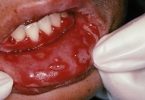What's in this article?
What is Wilms’ tumor?
Wilms’ tumor is a rare kidney cancer that primarily affects children. Also known as nephroblastoma, Wilms’ tumor is the most common cancer of the kidneys in children. Wilms’ tumor most often affects children ages 3 to 4 and becomes much less common after age 5.
Wilms’ tumor most often occurs in just one kidney, though it can sometimes be found in both kidneys at the same time.
Improvements in the diagnosis and treatment of Wilms’ tumor have improved the prognosis for children with this disease. The outlook for most children with Wilms’ tumor is very good.
Causes of Wilms’ tumour
In most children, the causes of Wilms’ tumour are unknown. Very rarely, people who develop Wilms’ tumour have other specific conditions which are present at birth (congenital malformations). These include the lack of an iris in the eye (aniridia), abnormalities of the genitals, and a condition where one side of the body is slightly larger than the other (hemihypertrophy).
In 1 in 100 people with Wilms’ tumour, another family member will also have Wilms’ tumour.
Signs and Symptoms of Wilms’ tumour
Before being diagnosed with Wilms tumor, most children do not show any signs of having cancer, and usually act and play normally. Often, a parent may discover a firm, smooth lump in the child’s abdomen. It is not uncommon for the mass to grow quite large before it is discovered ― the average Wilms tumor is 1 pound at diagnosis.
Some children also may have nausea, stomach pain, high blood pressure (hypertension), blood in the urine, loss of appetite, or fever.
Even though Wilms tumors often are large when found, most have not spread to other areas of the body. This makes it easier to successfully treat than if the cancer cells have spread (metastasized) to other parts of the body.
Types of Wilms’ tumor
Wilms tumors are grouped into 2 major types based on how they look under a microscope (their histology):
Favorable histology: Although the cancer cells in these tumors don’t look quite normal, there is no anaplasia (see next paragraph). More than 9 of 10 Wilms tumors have a favorable histology. The chance of curing children with these tumors is very good.
Unfavorable histology (anaplastic Wilms tumor): In these tumors, the look of the cancer cells varies widely, and the cells’ nuclei (the central parts that contain the DNA) tend to be very large and distorted. This is called anaplasia. The more anaplasia a tumor has, the harder it is to cure.
How common is Wilms’ tumor?
- Wilms tumor is the fourth most common type of childhood cancer and the most common type of kidney cancer in children.
- About 500 new cases of Wilms tumor are found each year in the United States, affecting about one in every 10,000 children.
- The risk for developing Wilms tumor is higher in African Americans than Caucasians, and lower among Asians.
- Children with one kidney affected (unilateral) are usually diagnosed around 3 years of age. Children with bilateral Wilms tumor are usually diagnosed around 2 years of age.
- Sometimes, Wilms tumor is also found in older children and even adults.
- Males and females are equally affected, though males may present at an earlier age compared with females.
Treatment for Wilms’ tumor
If your child is diagnosed with this condition, do not prod or push on the child’s belly area. Use care during bathing and handling to avoid injury to the tumor site.
The first step in treatment is to stage the tumor. Staging helps doctors determine how far the cancer has spread and to plan for the best treatment. Surgery to remove the tumor is scheduled as soon as possible. Surrounding tissues and organs may also need to be removed if the tumor has spread.
Radiation therapy and chemotherapy will often be started after surgery, depending on the stage of the tumor.
Staging of Wilms’ tumour
The stage of a cancer is a term used to describe its size and whether it has spread beyond its original site. Knowing the particular type and the stage of the cancer helps doctors decide on the most appropriate treatment.
In the case of a Wilms’ tumour, the stage is finalised after surgery to remove the tumour. As most Wilms’ tumour patients receive chemotherapy before surgery, you may not know the exact stage of your child’s tumour straight away. An exception is that babies under six months old usually have surgery straight away.
A commonly-used staging system for Wilms’ tumour is described below.
Stage 1
The tumour is only affecting the kidney and has not begun to spread. It can be completely removed with surgery.
Stage 2
The tumour has begun to spread beyond the kidney to nearby structures, but it’s still possible to remove it completely with surgery.
Stage 3
The tumour has spread beyond the kidney; either because the tumour has burst before (or during) the operation, has spread to lymph glands (nodes), or has not been completely removed by surgery.
Stage 4
The tumour has spread to other parts of the body such as the lungs or liver. Tumours in other parts of the body are known as metastases.
Stage 5
There are tumours in both kidneys (bilateral Wilms’ tumour).
If the tumour comes back after initial treatment, this is known as recurrent cancer or relapse.
Risk factors for Wilms’ tumor
Factors that may increase the risk of Wilms’ tumor include:
- Being black. Black children have a slightly higher risk of developing Wilms’ tumor than do children of other races. Children of Asian descent appear to have a lower risk than do children of other races.
- Having a family history of Wilms’ tumor. If someone in your child’s family has had Wilms’ tumor, then your child has an increased risk of developing the disease.
Wilms’ tumor occurs more frequently in children with certain abnormalities present at birth, including:
- Aniridia. In this condition the iris the colored portion of the eye forms only partially or not at all.
- Hemihypertrophy. A condition that occurs when one side of the body is noticeably larger than the other side.
- Undescended testicles. One or both testicles fail to descend into the scrotum (cryptorchidism).
- Hypospadias. The urinary (urethral) opening is not at the tip of the penis, but is on the underside.
Wilms’ tumor can occur as part of rare syndromes, including:
- WAGR syndrome. This syndrome includes Wilms’ tumor, aniridia, abnormalities of the genitals and urinary system, and mental retardation.
- Denys-Drash syndrome. This syndrome includes Wilms’ tumor, kidney disease and male pseudohermaphroditism, in which a boy is born with testicles but may exhibit female characteristics.
- Beckwith-Wiedemann syndrome. Signs of this syndrome include abdominal organs that protrude into the base of the umbilical cord, a large tongue (macroglossia) and enlarged internal organs.








